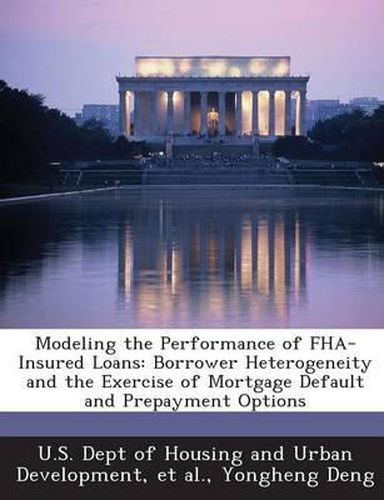Readings Newsletter
Become a Readings Member to make your shopping experience even easier.
Sign in or sign up for free!
You’re not far away from qualifying for FREE standard shipping within Australia
You’ve qualified for FREE standard shipping within Australia
The cart is loading…






Although mortgage loans to lower-income and higher credit risk borrowers are characterized by elevated default probabilities, those risks may be mitigated by their slower prepayment speeds. Loans to higher credit risk borrowers may prepay more slowly (when prepayment option is \“in the money\”) owing to difficulties in borrower access to mortgage credit, problems of mortgage qualification, limited borrower knowledge of mortgage refinance options, or damped residential mobility. Because the prepayment risk premium is substantial, the differentially slower prepayment speeds of loans to higher risk borrowers may have important implications for loan profitability and for efforts to expand homeownership among those groups. This paper estimates an option-based hazard model to simultaneously assess the competing risks of mortgage default and prepayment. In so doing, the analysis seeks to assess the differential default and prepayment probabilities among higher credit risk FHA mortgage borrowers. The empirical model derives from option theory and employs well-specified proxies for the mortgage put and call options in the default and prepayment equations. Further, given the availability of high quality micro data, the estimating equations control for borrower credit worthiness (credit scores) and other common underwriting variables among the approximately 40 contemporaneous and time-invariant indicators of borrower, loan, and locational risk.
$9.00 standard shipping within Australia
FREE standard shipping within Australia for orders over $100.00
Express & International shipping calculated at checkout
Although mortgage loans to lower-income and higher credit risk borrowers are characterized by elevated default probabilities, those risks may be mitigated by their slower prepayment speeds. Loans to higher credit risk borrowers may prepay more slowly (when prepayment option is \“in the money\”) owing to difficulties in borrower access to mortgage credit, problems of mortgage qualification, limited borrower knowledge of mortgage refinance options, or damped residential mobility. Because the prepayment risk premium is substantial, the differentially slower prepayment speeds of loans to higher risk borrowers may have important implications for loan profitability and for efforts to expand homeownership among those groups. This paper estimates an option-based hazard model to simultaneously assess the competing risks of mortgage default and prepayment. In so doing, the analysis seeks to assess the differential default and prepayment probabilities among higher credit risk FHA mortgage borrowers. The empirical model derives from option theory and employs well-specified proxies for the mortgage put and call options in the default and prepayment equations. Further, given the availability of high quality micro data, the estimating equations control for borrower credit worthiness (credit scores) and other common underwriting variables among the approximately 40 contemporaneous and time-invariant indicators of borrower, loan, and locational risk.